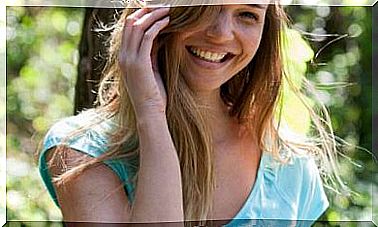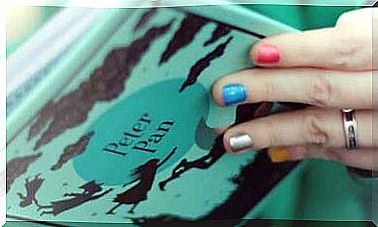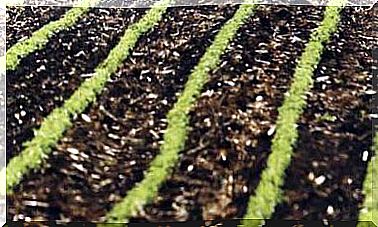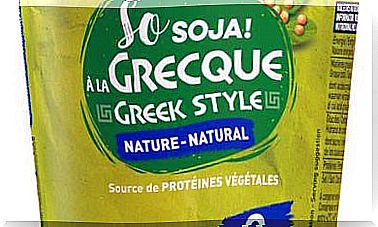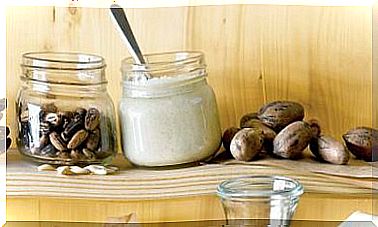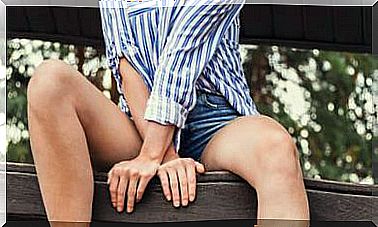Skin Diseases Express Your Inner World
Internal imbalances and emotional conflicts can take the form of rashes, eczema, acne, psoriasis. How to cure them forever?

For modern medicine, the skin is a pure reflection of our inner world. If our body were an ocean, the waves would become our skin, smooth and calm at times, agitated and splashed at others. The blue surface that we see from above reveals the state of the depths of that sea, and sometimes even the external aggressions it suffers.
Many emotions and internal conflicts appear easily and suddenly expressed on the skin : the face flushes when we are ashamed or our hands sweat when we are nervous.
Recent studies have shown that a situation experienced with a high degree of stress induces the release of neurotransmitters that alter the production of hormones and can cause, for example, alopecia areata (sudden and very localized hair loss in the form of plaques) or a noticeable worsening of a juvenile acne picture .
Finding where the imbalance is located between the most intimate dreams and the reality itself helps to understand personal conflicts. It is not uncommon for this rupture to manifest itself through our outermost mantle: the skin.
By listening to our interior we will better understand the behavior of the skin.
Natural therapies try to take care of the skin by protecting its purifying function and without inhibiting its communication capacity, respecting the global health of the individual and not dividing it into systems that are not connected to each other.
If that expression is suppressed , the possibility of meditating on its meaning is lost, and over time it is more than likely that this eruption will reappear with more virulence or even spread to other parts of the organism.
Functions of the skin: it protects and connects us
Each person has an individual symptomatic expression, which is marked by their genetic load but also by their environment, and there is a direct relationship between what we live and feel and what emerges through the skin.
The skin has many functions, in fact it is the largest organ in the body and occupies almost two square meters.
- It is our first protective barrier against microbial, physical or chemical attacks.
- It also exerts a thermoregulatory action and is the meter that helps maintain the right temperature for all the structures housed inside.
- It is also the seat of the sense of touch, through which we can not only feel intense emotions but also take care of our health. Without touch we could lose a limb or not perceive that our hand is burning.
- It works as a toxin purifier through sweating.
- It is an essential element for the synthesis of vitamin D, essential for the bone absorption of calcium.
But without a doubt the function that can help the most to understand their physiology is that of the relationship: the epidermis is the limit between our body and the outside, and therefore where all the information that requires this link will be conveyed.
Thus, an alteration in social relationships can also be seen projected through the skin.
It has been proven that a caress generates the cerebral production of substances that provide feelings of protection and well-being.
Neurologically, the hypothalamic release of oxytocin when we receive a caress, a hug or a handshake is well known . High amounts of this hormone in the bloodstream provide a pleasant feeling of security and happiness to the individual.
This intimate relationship between the nervous system and the epidermis is believed to be due to the fact that both structures come from the same germ region, the ectoderm, the outermost primary cell layer of the embryo.
Why do we somatize through the skin and how to avoid it?
In our current culture the image has acquired a great relevance, and as a consequence the tendency to suppress impurities quickly and at any price emerges , without calculating the consequences.
Knowing that the skin is a clear emotional mirror and that suppressing emotions usually has worse consequences in the medium or long term, is it logical to try to erase each of our skin manifestations? If when an eczema appears on the arm an ointment is applied that suppresses that expression, can we not be silencing something else? Wouldn’t it be more logical to try to find its origin and try to repair it so that the skin recovers its usual structure?
This is precisely the proposal of homeopathy when it comes to curing skin diseases. It is usual that the dermal lesion has tried to be inhibited before the visit to the homeopathic doctor with all kinds of topical and oral medications. Thanks to them, the symptoms will have temporarily improved, but when the patient neglects or stops applying the ointment , the same annoying lesion reappears.
To understand how to approach the cure of skin diseases, one must consider the meaning of a simple but truthful maxim: “better outside than inside.”
Itching, flaking, redness or pain can become unpleasant, even unbearable, discomfort, but sometimes they involve a purifying process that, if not located in that most external part of the body, could be damaging more noble viscera, even compromising vital functions .
It is a natural law and easy to understand, as long as we are willing to listen patiently to what our skin tells us and to what extent it is convenient for it to continue expressing itself.
In homeopathy it is frequently observed how the first thing that changes in the clinical evolution of a case is the primordial, the most profound. Then, little by little the less transcendent organs recover health, to the point that we consider a process healed when aspects of the skin change, understanding that the last layer has already reached its balance.
The relationship between stress and psoriasis
It was the situation that Joan experienced , affected by psoriasis. With the first doses of Lycopodium he began to notice that his character changed, becoming less intransigent and lowering his anxiety. His tics and ongoing flatulence problems also improved.
But her psoriasis was still there, and it wasn’t until a few months later that Joan could begin to see improvement, just when she was able to modify the inhibitions and conflicts that were conditioning her illness and her life.
Learn to express anger
Clara comes to visit for a terrible rash on her hands, with a great itching since the first blister appears and that increases as the lesion spreads. It is always the same evolution: at first he improved a lot with cortisone-based creams, but the episodes were more and more lasting and aggressive, to the point that the damaged skin begins to present bloody cracks between his fingers, very painful and difficult to heal.
She had never presented any skin alteration, except for a sign of dermographism (a mark that persists for a few seconds on the skin after a slight brushing), which she considers as something of her own and with what she has always lived with. Clara remembers that it all began after a strong and unfair reprimand from her mother- in- law, to whom she did not answer, due to her education and dignity, but which generates a feeling of furious internal rage that she does not even express to her husband.
Two weeks after the administration of a single dose of Staphysagria, his hands are different, much softer, without cracks or pain, although the lesions will not disappear until another much deeper and more aggressive wound has previously healed, the one that is stuck in his soul.
Losing the fear of relating
Francisco is a young 24-year-old economist who has pronounced long-standing acne, but it has worsened in the last three months, since he started working.
He has always considered himself applied and meticulous in studies, but he also recognizes a high degree of fear of failure. He is very insecure and shy, and blocks himself in situations where he must express his opinion publicly, wondering to himself what they have thought of him.
Silicea is a homeopathic remedy that fits his profile, and it will allow Francisco to reduce his tremendous insecurity, help him to manage his current fear of new relationships in the world of work, and finally he will improve and clear his skin of that annoying acne that he He has made himself as a protective barrier against the hostility of having to interact.
At other times we observe how someone who feels the difficulty of taking a step closer to another, who feels anguished at a firm commitment, can create a barrier in the form of a rash on the skin itself, a pretext that can help them get away from their own fear.
Lucia, a 5-month-old baby, has very pronounced eczema on her arms and legs despite the tender and tenacious care of her mother, who applies moisturizing creams daily. The picture has been labeled atopic skin, and it manifested itself just as the girl started kindergarten.
Homeopathic treatment helps Lucia manage her first social landing, and a few days later the eczema disappears.
Stop feeling guilty
Any illness generates a strong negative component in our society from the outset, it is not usually understood as another stretch on our path through life, but rather as an unpleasant obstacle to fight against.
This conception is even more aggravated by skin conditions, because we unconsciously associate them with impurity and contamination. Most skin pathologies, no matter how mild, tend to lead to social rejection, and sometimes that makes it difficult to solve the problem.
Denial can lead the sufferer to try to get away and even feel guilty about the situation. This can translate into an aggressiveness towards oneself that is physically expressed in an exasperating itch that forces you to scratch and injure already damaged skin.
This is the case of Aroa, a young woman who comes for a very itchy ringworm since shortly after her boyfriend left her. He has always thought that the reason for the breakup is that she did not give him enough, and he constantly blames himself for it. In this case, Thuya calms her guilt and her eruption.

